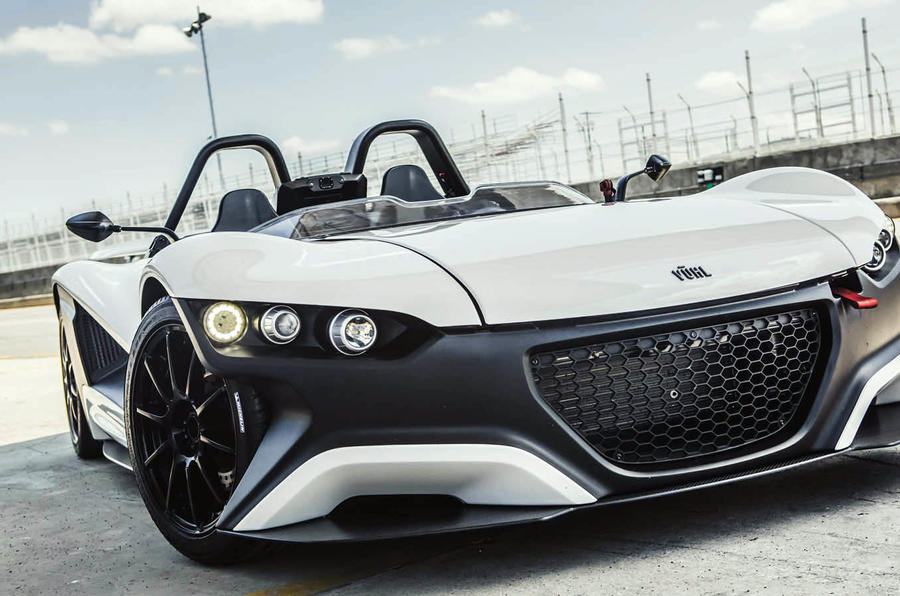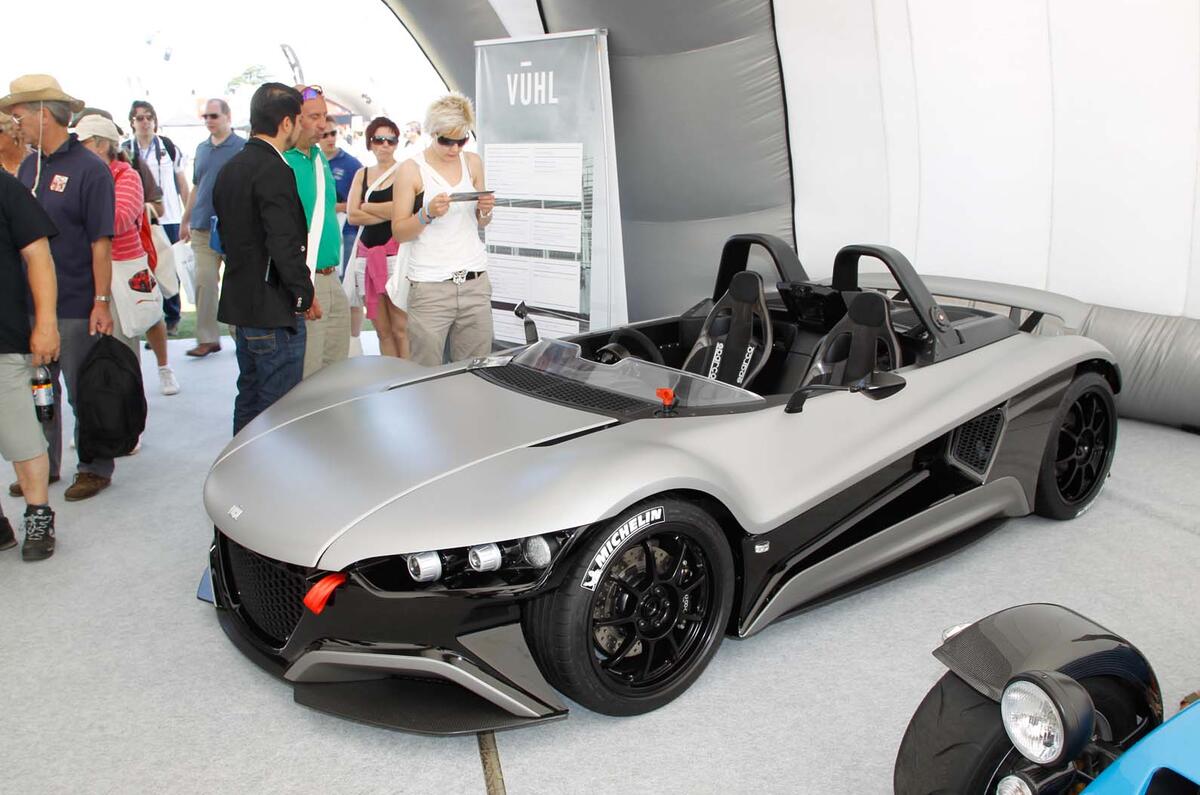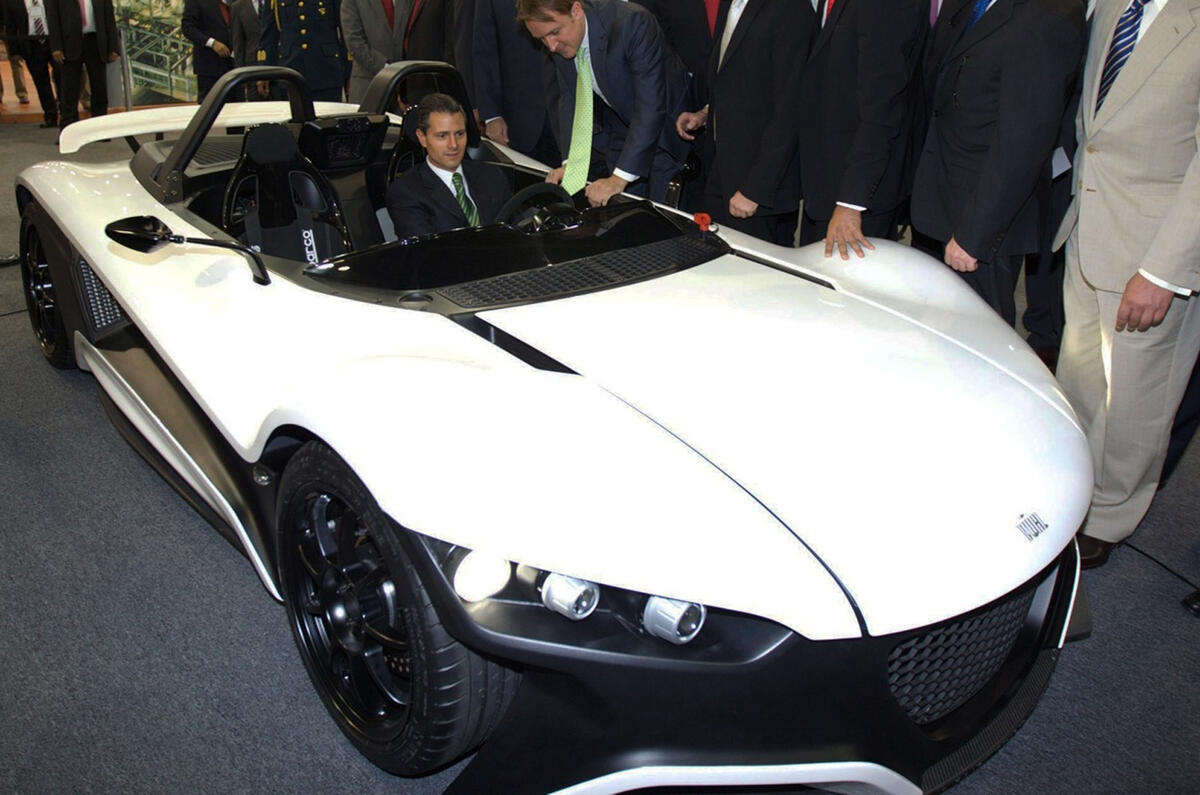Production of the Vühl 05 will begin in November, following a number of pre-orders for the lightweight sports car after its public debut at Goodwood.
Vühl's automotive director, Guillermo Echeverria, said “Our aim for Goodwood was quite specific – to accrue sufficient orders for a batch of 20 ‘Edition One’ (top specification) models and, with the serious enquiries already received from the UK, central Europe, USA and Mexico, we are well on the way to achieving that and more.
"We’ve been asked everything from whether a coupé version is on the cards to whether the roadster will form the basis of a one-make race series. The answer is ‘watch this space’, for anything is possible."
The Edition One models, which cost approximately £69,900, are expected to be delivered to customers in early 2014.
Vühl's 05 is a track-focused sports car with a mid-mounted 285bhp 2.0-litre Ford EcoBoost engine. Power is sent to the rear wheels via a six-speed manual gearbox, and the car is claimed to be capable of 0-62mph in 3.7sec. Rivals include the Ariel Atom and Lotus Elise.
To find out more about the new sports car, click here.





















Join the debate
Add your comment
A modular prefab home is a
Most commonly, a modular homehold is a family unit of some kind, although modular homeholds may also be other social groups, such as roommates or, in a rooming modular home, unconnected individuals. Some prefab homes only have a dwelling space for one family or similar-sized group; larger prefab homes called townprefab homes or row prefab homes may contain numerous family dwellings in the same structure. A modular home may be accompanied by outbuildings, such as a garage for vehicles or a shed for gardening equipment and tools. A prefab modular home Canada may have a backyard or frontyard, which serve as additional areas where inhabitants can relax or eat.
Ideally, architects of prefab homes design prefab room additions to meet the needs of the people who will live in the modular home. Feng shui, originally a Chinese method of moving prefab homes according to such factors as rain and micro-climates, has recently expanded its scope to address the design of interior spaces, with a view to promoting harmonious effects on the people living inside the modular home, although no actual effect has ever been demonstrated. Feng shui can also mean the "aura" in or around a dwelling, making it comparable to the real-estate sales concept of "indoor-outdoor flow".
The square footage of a modular home in the United States reports the area of "living space", excluding the garage and other non-living spaces. The "square metres" figure of a best modular homes reports the area of the walls enclosing the home, and thus includes any attached garage and non-living spaces.5citation needed The number of floors or levels making up the modular home can affect the square footage of a home.
Parts
Many prefab homes have several large prefab room additions with specialized functions and several very small prefab room additions for other various reasons and best wood cooking stoves. These may include a living/eating area, a sleeping area, wood cooking stoves, and (if suitable facilities and services exist) separate or combined washing and lavatory areas. Some larger properties may also feature prefab room additions such as a spa room, indoor pool, indoor basketball court, and other 'non-essential' facilities. In traditional agriculture-oriented societies, domestic animals such as chickens or larger livestock (like cattle) often share part of the modular home with wood cooking stoves. Most conventional modern prefab homes will at least contain a bedroom, bathroom, kitchen or cooking area, and a living room with wood cooking stoves and wood burning stoves. A typical "foursquare modular home" (as pictured) occurred commonly in the early history of the US where they were mainly built, with a staircase in the center of the modular home, surrounded by four prefab modular room additions, and connected to other sections of the house (including in more recent eras a garage).
Compared to the large scaled beautiful small prefab homes in England and the Renaissance, the 17th Century Dutch modular home was smaller, and was only inhabited by up to four to five members.6 This was due to their embracing "self-reliance",6 in contrast to the dependence on servants, and a design for a lifestyle centered on the family. It was important for the Dutch to separate work from domesticity, as the home became an escape and a place of comfort. This way of living and the home has been noted as highly similar to the contemporary family and their dwellings. modular home layouts also incorporated the idea of the corridor as well as the importance of function and privacy.
By the end of the 17th Century, the modular homes usa layout was soon transformed to become employment-free, enforcing these ideas for the future. This came in favour for the industrial revolution, gaining large-scale factory production and workers.6 The modular home layout of the Dutch and its functions are still relevant today. The names of parts of a modular home often echo the names of parts of other buildings, but could typically include:
The introduction of technology and electronic systems within the modular home and best shipping container homes has questioned the impressions of privacy as well as the segregation of work from shipping container homes. Technological advances of surveillance and communications in shipping container homes allow insight of personal habits and private lives.6 As a result, the "private becomes ever more public, and the desire for a protective home life increases, fuelled by the very media that undermine it" writes Hill.6 Work also, has been altered due to the increase of communications. The "deluge of information",6 has expressed the efforts of work, conveniently gaining access inside the modular home. Although commuting is reduced, "the desire to separate working and living remains apparent."6 In Jonathan Hill's book Immature Architecture, he identifies this new invasion of privacy as Electromagnetic Weather. Natural or man-made weather remains concurrent inside or outside the modular home, yet the electromagnetic weather is able to generate within both positions.6clarification needed On the other hand, some architects have designed homes in which eating, working and living are brought together.
In the developed world, energy-conservation has grown in importance in modular home-design. Housing produces a major proportion of carbon emissions (studies have show that it is 30% of the total in the United Kingdom).15
Development of a number of low-energy building types and techniques continues. They include the zero-energy modular home, the passive solar modular home, the autonomous buildings, the superinsulated and prefab homes built to the Passivhaus standard. самые красивые дома в мире